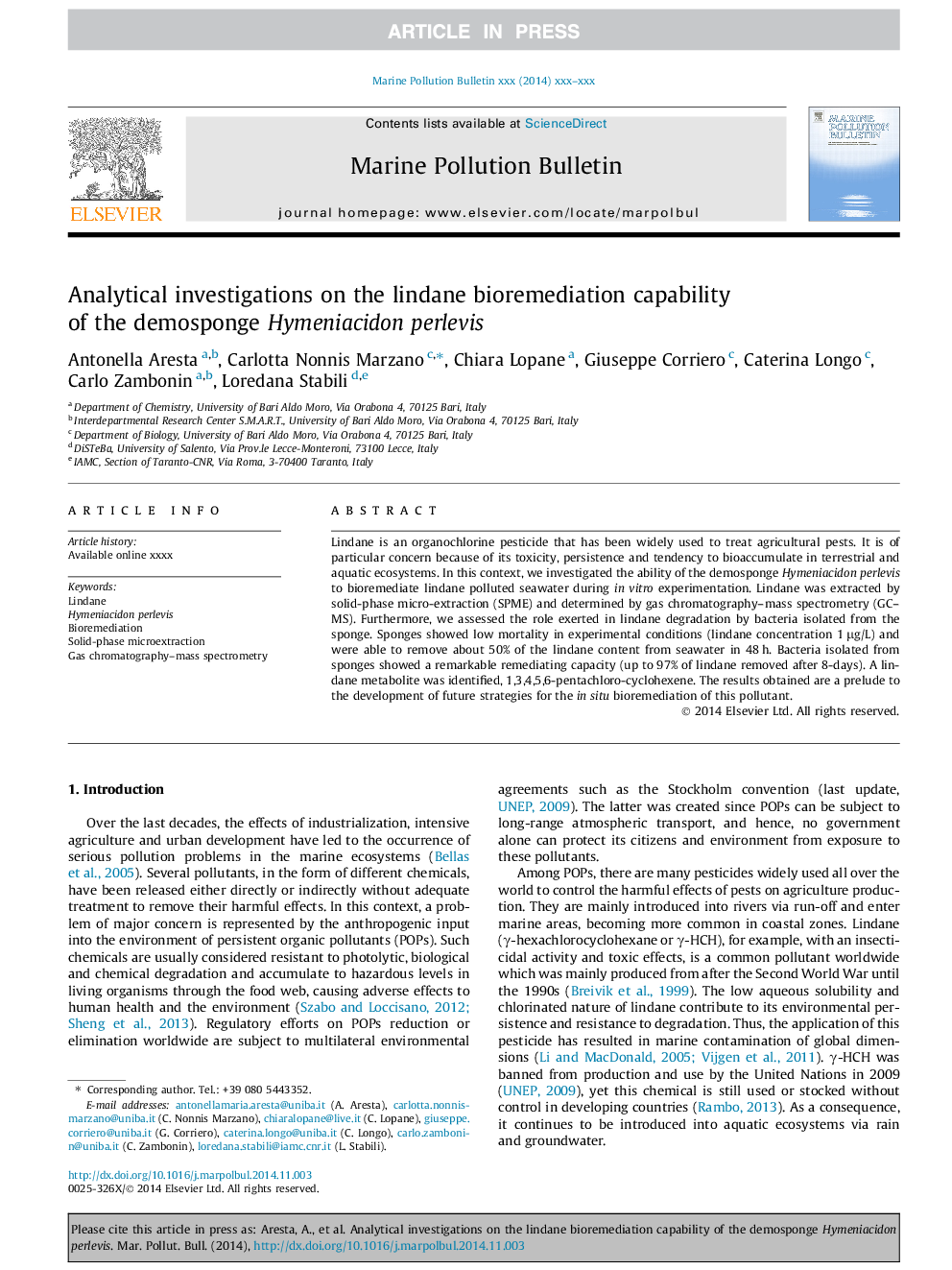| Article ID | Journal | Published Year | Pages | File Type |
|---|---|---|---|---|
| 6357199 | Marine Pollution Bulletin | 2015 | 7 Pages |
Abstract
Lindane is an organochlorine pesticide that has been widely used to treat agricultural pests. It is of particular concern because of its toxicity, persistence and tendency to bioaccumulate in terrestrial and aquatic ecosystems. In this context, we investigated the ability of the demosponge Hymeniacidon perlevis to bioremediate lindane polluted seawater during in vitro experimentation. Lindane was extracted by solid-phase micro-extraction (SPME) and determined by gas chromatography-mass spectrometry (GC-MS). Furthermore, we assessed the role exerted in lindane degradation by bacteria isolated from the sponge. Sponges showed low mortality in experimental conditions (lindane concentration 1 μg/L) and were able to remove about 50% of the lindane content from seawater in 48 h. Bacteria isolated from sponges showed a remarkable remediating capacity (up to 97% of lindane removed after 8-days). A lindane metabolite was identified, 1,3,4,5,6-pentachloro-cyclohexene. The results obtained are a prelude to the development of future strategies for the in situ bioremediation of this pollutant.
Related Topics
Physical Sciences and Engineering
Earth and Planetary Sciences
Oceanography
Authors
Antonella Aresta, Carlotta Nonnis Marzano, Chiara Lopane, Giuseppe Corriero, Caterina Longo, Carlo Zambonin, Loredana Stabili,
